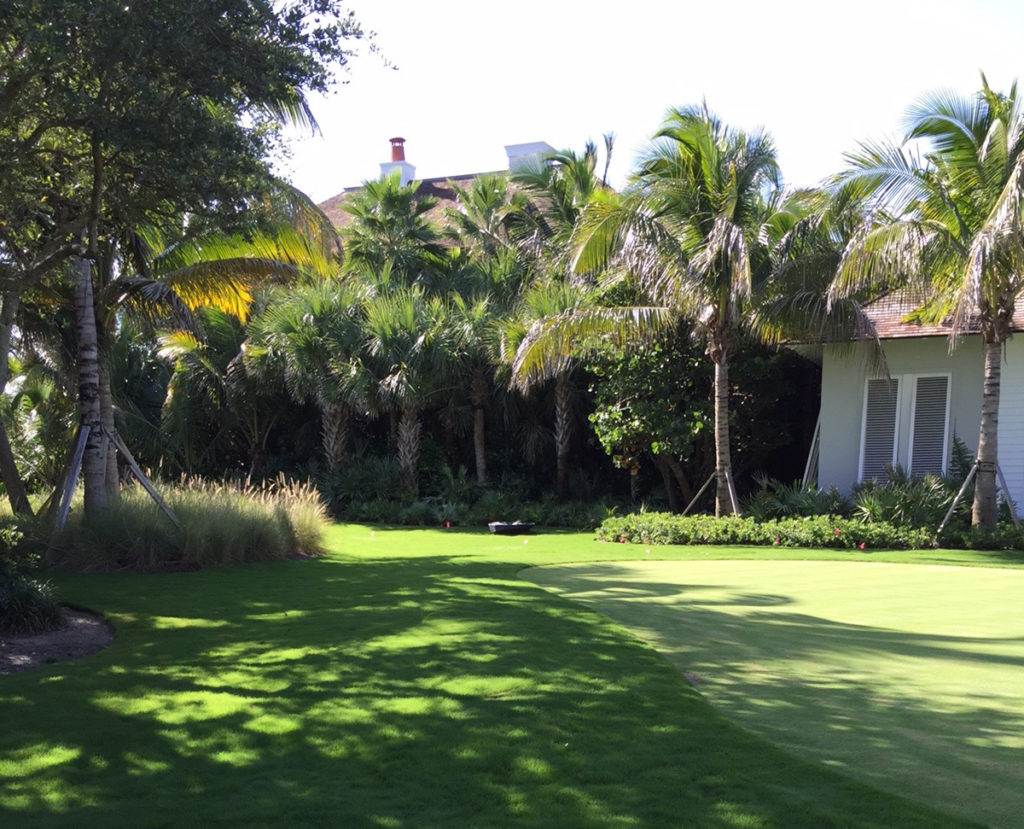

Latitude 36 Bermudagrass Spring Dead Spot Resistance
Spring green-up is a sign of new beginnings when new buds sprout, new leaves unfurl and lawns start to show their green after the winter. This also is the time to watch for spring dead spot which appears as circular patches from six inches to larger that remain dormant as turf begins its spring green-up. Spring dead spot is most noticeable on managed bermudagrass. One Sod Solutions improved turfgrass variety that shows excellent resistance to spring dead spot is Latitude 36®Bermudagrass.
Developed by renowned Oklahoma State University, Latitude 36 is a top-rated National Turfgrass Evaluation Program (NTEP) bermudagrass. Latitude 36 has a softer feel with a 1.67mm blade width while showing excellent tensile strength and high traffic tolerance, making it a perfect choice for sports venues, golf courses and home lawns.
Latitude 36 Bermudagrass was tested for seven years at Oklahoma State before entering its national testing phase. The grass then underwent rigorous independent evaluation by researchers at land grant universities across the southern U.S. and the central transition zone through the NTEP. At the conclusion of the 2007—2012 NTEP bermudagrass trials, Latitude 36 claimed overall top honors after showing high resistance to spring dead spot and displaying exceptional wear tolerance.
Part of the 2013—2018 NTEP trials as a standard for quality and performance, Latitude 36 is very well adapted for use on golf course fairways, tee boxes and greens surrounds, and on highly maintained, heavily trafficked sports fields, research shows. It also can be used on home lawns where high quality is desired and regular maintenance will be practiced.
In addition to its resistance to spring dead spot, Latitude 36 Bermudagrass also shows very good weed control and insect resistance. With good shade tolerance and excellent drought tolerance, recommended watering frequency is about one inch per week. It is ideal for use in the transition zone and parts of the eastern, western and southern United States where traditional bermudagrasses tolerate summer conditions. However, it can experience winter kill during particularly cold winters.
Spring maintenance of Latitude 36 bermudagrass is important as the active growing season begins. Here are tips on mowing and watering:
- A standard rotary or reel mower is recommended.
- Following the final freeze of winter, drop your mower a notch and give your Latitude 36 Bermudagrass a “buzz-cut”.
- Make sure to bag up all the material to get rid of the brown top layer and any old leaves.
- For the remainder of spring and summer, keep your Latitude 36 lawn mowed between .5–1.5 inches.
- If you notice scalping or browning after mowing, you may need to mow more frequently.
- Don’t overwater. In the active growing season, Latitude 36 needs about one inch of water per week, either from natural rainfall or irrigation. Too much water can cause disease.

